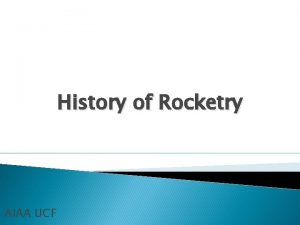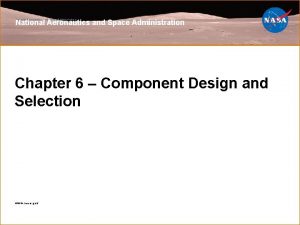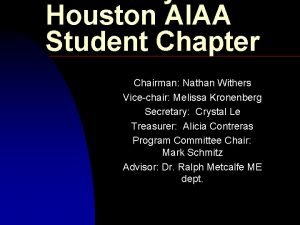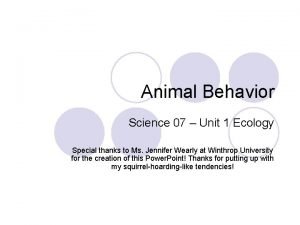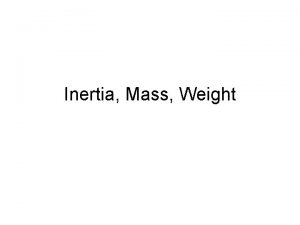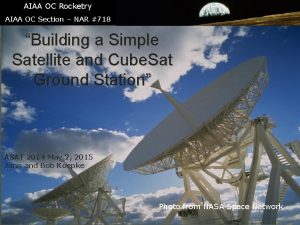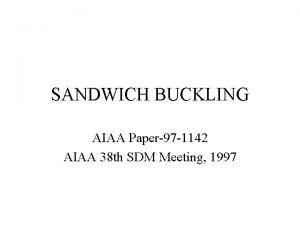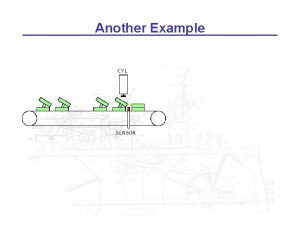Another Approach to the Cause of Inertia AIAA

![Current Thoughts on Inertia n What is inertia? Resistance to [change in] motion (per Current Thoughts on Inertia n What is inertia? Resistance to [change in] motion (per](https://slidetodoc.com/presentation_image/191c1b569227c922eb0270e47a78c6e9/image-2.jpg)









- Slides: 11

Another Approach to the Cause of Inertia AIAA 2002 -4096 Gregory V. Meholic Greg. V. Meholic@aero. org 38 th AIAA/ASME/SAE/ASEE Joint Propulsion Conference Indianapolis, Indiana July 8 -10, 2002 February 11, 2004 Space Technologies and Applications International Forum Albuquerque, NM 1
![Current Thoughts on Inertia n What is inertia Resistance to change in motion per Current Thoughts on Inertia n What is inertia? Resistance to [change in] motion (per](https://slidetodoc.com/presentation_image/191c1b569227c922eb0270e47a78c6e9/image-2.jpg)
Current Thoughts on Inertia n What is inertia? Resistance to [change in] motion (per Newton’s laws). n Why do we care where it comes from? Finding the source could lead to mitigation/reduction techniques that would profoundly change science and transportation. n What do we think causes inertia? 1) an inherent property of matter - “exotic” mass 2) electromagnetic/quantum interactions with matter and the Zero Point Field (ZPF) 3) the gravitational forces from the chiefly distant matter in the universe - Mach’s Principle or… 4) the reaction of the local SPACETIME medium to a disturbance To illustrate the latter, we first need a alternative model of spacetime and gravity… 2

Tri-Space Model of Spacetime n Ok, so what is spacetime? ce l ines Spacetime surface EM radiation and waves/particles Spa Gravity attracts Mass Time lines n n Spacetime medium (strings, quant. foam) Spacetime “thickness” or ZPF (? ) Spacetime is everywhere and exhibits the same qualities between galaxies as it does between atoms. Spacetime medium made of strings, filaments and quantum foam this is the ZPF. It has a thickness and exhibits quasi-fluidic properties (elasticity, viscosity, densities, etc. ). Spacetime has a surface that supports EM radiation energies. p Includes mass energy, particles, waves, etc. p Exhibits a surface tension-like quality 3

Tri-Space Model of Gravity n Then what is the relationship between mass and gravity? p p Spacetime wants to remain “flat” (supporting a flat universe). Large masses (non-subatomic), however, distort and displace flat spacetime to create not one, but TWO gravitational effects: 2 -D undisturbed spacetime with a Reference Flatness Slope of spacetime wrt ref. flatness is the Gravity Gradient “Steeper” angle = “Stronger” gravity effect Spacetime Medium Mass 2) SECONDARY GRAVITY WELL * Familiar, weak, gravity field felt by all other masses (per G) * Resultant distortion of spacetime * Observed all of the time 1) PRIMARY GRAVITY WELL * Displaces spacetime surface in shape of body * Large gravity gradients * Only observed during acceleration 4

Tri-Space Model of Gravity Why are two gravity wells needed to explain inertia? n p Having a single gravity well, as in the classical spacetime models, does not explain why inertial forces are so strong. This is not equal to this Classical Representation: Point mass in spacetime p p p Tri-Space: Two gravity effects But the primary gravity well literally stretches the spacetime surface, resulting in subtle changes to local characteristics. These result in steeper gravity gradients and is why the primary well is orders of magnitude stronger than the secondary well. Although the primary well is never observed in a steady-state condition (because the mass is still in it), its effects are ONLY and ALWAYS observed during acceleration, hence… The primary gravity well is the key to INERTIA 5

Spacetime Displacement Inertia n According to Tri-Space then, how is inertia created? The Tri-Space model allows an easy visualization of how inertia is created as shown in a scenario for basic acceleration: 1) Force applied to a body at rest (t=0) Secondary distortion 2) Body feels INERTIA (t>0) F v F M Primary well 3) Velocity increases (t>>0) Backwards tug from primary well 4) Constant v established (t>>>0) v Primary well begins to recover Overall gravity well broadens Spacetime resists displacement v Recovery surge for steady-state Inertia is the resultant effect when an object tries to climb out of its own primary gravity well. It is generated when spacetime resists changes in its topography. 6

Spacetime Displacement Inertia n What else does this model of Inertia show? p The quasi-fluidic properties of spacetime yields a “local time lag” for it to react to the change in position of a body. – Analogous to Wheeler-Feynman absorber theory, but without EM Spacetime also applies a viscous resistance that opposes motion of a moving body. p Bodies actually weigh less when experiencing inertia. p – Frame 2 shows accelerating mass makes shallow primary well – Supported by the weight fluctuation experiments of Woodward, et al. p Bodies “appear” to have more mass when experiencing inertia. – Frame 3 shows broader gravity well giving appearance of more mass – Supported by Special Relativity p n Inertia is a purely local, spacetime phenomenon and is independent of distant masses, the ZPF, other gravity sources and EM fields. Are gravity and inertia related? YES!! There can be gravity without inertia, but there can be no inertia without gravity. 7

Other Inertia-Related Physics n What about inertia for small (atomic-scale) masses? The smaller the mass, the shallower the primary gravity well. p Atomic-scale masses do not experience inertia since they have no primary well - they are only “floating” on the spacetime surface. p This allows them to experience tremendous accelerations without affecting the underlying spacetime medium. p n What about Special Relativity? At v~c, the body creates a standing wave of spacetime in the path ahead responsible for relativistic mass increase. p Constant thrust may be required to maintain such speeds in order to overcome spacetime fluidics. p F v~c Observed mass seems much larger due to huge gravity gradient and broad gravity well “Proper” mass remains the same 8

Other Inertia-Related Physics n How do gravity waves play a role in inertia? They don’t. The Tri-space model does not support the long-term propagation of gravity waves. p Inertial “time lag” indicates that spacetime acts as a critically or overdamped medium. – Perturbation energies are quickly absorbed into the local medium. – Gravity does not create EM-like waves or propagating surface effects, but can still be characterized by a field. p n What are gravitons? Gravitons are formed from spacetime “connector” strings that break during acceleration. p They are only observable during acceleration and are quickly absorbed back into spacetime. p Only formed in the wake of a moving object. p Strings stretch at mass/surface interface Strings break and recoil to form graviton “loops” 9

Mitigating or Reducing Inertia n How can inertia be overcome? p Reshape the Primary Gravity Well – Emit some form of specially-conditioned radiation field* that extends the primary well ahead of the body. Original primary gravity well Extended primary gravity well F Specially-conditioned EM field p Artificial Reduction of Mass – Increase the local surface energy density such that spacetime redistributes its energy and thinks the mass is less. – Results in reduced displacement resistance. Low surface density, Steep gravity gradient, Deep primary well High surface density, Shallow gradient, Shallow primary well * Froning, Jr. , H. D. , Barrett, T. , and Hathaway, G. , “Experiments Involving Specially Conditioned EM Radiation, Gravitation and Matter, ” AIAA Paper 98 -3138, 34 th AIAA/ASME/SAE/ASEE Joint Propulsion Conference, Cleveland Ohio, July 13 -15, 1998. 10

Summary ß The ideas presented here according to the Tri-Space model of spacetime and gravity. y y y n n n n Mostly speculation based on current physics and scientific observations. Need to expand concepts into mathematics for better definition. Meholic, G. , “Beyond the Light Barrier: A Concept for Superluminal Travel, ” AIAA Paper 98 -3410, 34 th JPC Has quasi-fluidic properties that combine to offer a “time lag” and resistance when a body changes position in space. Has a “surface” on which EM radiation resides. Gravitational potential from geometric distortions in spacetime can be quite strong and easy to create. A massive body creates a primary gravity well and a secondary distortion. Gravity can exist without inertia, but inertia can not exist without gravity. Inertia is the resultant effect when an object tries to climb out of its own primary gravity well. Inertia is purely a local spacetime phenomenon and is independent of distant masses, the ZPF, other gravity sources and EM fields. 11
 Wooden bird rocket
Wooden bird rocket Aiaa s-114
Aiaa s-114 Nathan withers
Nathan withers Oscar and alphonse harris burdick
Oscar and alphonse harris burdick Our vicar is always raising money for one cause or another
Our vicar is always raising money for one cause or another Ultimate vs proximate causation
Ultimate vs proximate causation Learned behavior biology
Learned behavior biology Underlying cause and immediate cause
Underlying cause and immediate cause Ultimate cause of behavior
Ultimate cause of behavior Theoretical models of counseling
Theoretical models of counseling Approach to system development
Approach to system development What is research approach
What is research approach
